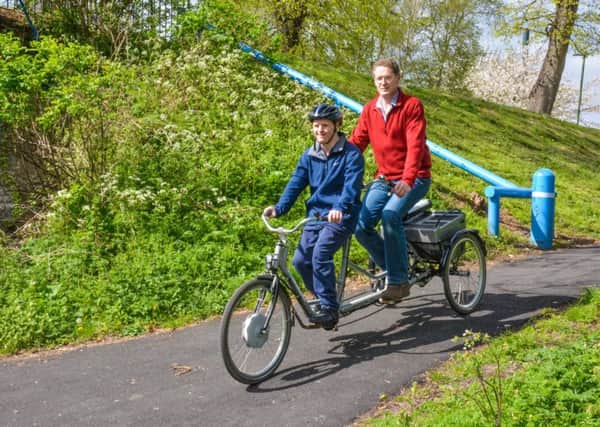Region leads way on cycle paths, but '˜national overhaul is needed'


While more than half of the UK population lives within a mile of the National Cycle Network, cycling charity Sustrans has found in its first review, only half of its paths are safe for a child of 12 to use. In its Paths for Everyone report, the charity unveils the state of the 23-year-old network and a long-term plan to make it traffic-free and tackle problems that can make it difficult to use.
Working with local authorities, it aims to deliver four major schemes across the region by 2023, in the Calder Valley, between Wakefield and Leeds, and in the areas around Harrogate and Wetherby.
Advertisement
Hide AdAdvertisement
Hide AdSetting out an ambitious vision to make the network accessible to all, the charity says too many people are help back by inconsistent quality and blocked paths.
“We are proud that Yorkshire has the highest amount of network of any English region, at over 1,000 miles, which is also a fantastic asset for tourism thanks to popular long distance routes such as the Way of the Roses and the Trans Pennine Trail,” said Rosslyn Colderley, Sustrans regional director for the North of England.
“We are working with local authorities across the region to ensure the network is part of wider plans for walking and cycling and helping to create links to routes across the UK.We want to build on its success and make the network safer and more accessible for everyone, not just for people who currently use it.
“However, historic problems such as poor surfaces, incomplete signage or barriers mean that for people with mobility issues or those of us who are less physically active, there may as well be a ‘no entry’ sign on their local path.”
Advertisement
Hide AdAdvertisement
Hide AdThe independent audit, commissioned by Sustrans, sets out 15 recommendations for change, including the removal or redesign of barriers, doubling the number of paths away from cars, improving safety, signage and path quality. Across the North, half the network is rated as poor or very poor, with the biggest concern being around traffic safety concerns.
In action projects set out to be delivered by the charity by 2023, it highlights four areas in Yorkshire – a route between Dewsbury and Huddersfield on the Calder Valley Greenway, between Wakefield and Leeds on the Methley Trans-Pennine Trail, Follifoot underpass near Harrogate and extending Wetherby Railway Pass.
While the National Cycle Network has the potential to help people live healthier lives, Sustrans argues it should also been seen as a major piece of transport infrastructure with untapped economic potential. The charity has estimated such an overhaul will double the number of people travelling actively nationwide – be it on foot, by bike or in a wheelchair – up to 8.8m, totalling a £2.8bn investment over the next 22 years.
“Politicians across Yorkshire are grappling with problems like congested roads, air pollution and increasing levels of obesity,” Ms Colderley added. “In pure transport terms, the National Cycle Network presents a huge opportunity to transform the way people travel. But the benefits of investing in the network will be seen right across government.”
Comment: Page 10.